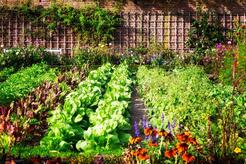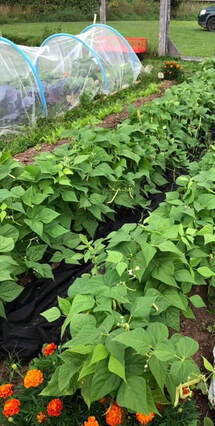
The beautiful frost covered province of New Brunswick extends across two planting zones (4 and 5). The region is made up of rolling hills, sweeping flatlands, floodplains, rugged cliffs, and long coastlines, making it challenging for even the most experienced of gardeners.
Two of the most important aspects of gardening are knowing when to plant and what to plant in your vegetable or flower garden. However, it can be difficult to know the exact time to begin planting in order for a garden to flourish throughout the growing season. If your plant or garden fails to thrive, simply adjusting your planting time frame might make a big difference. A planting calendar takes the guesswork out of the process.

Planting calendars are designed to calculate the best time to start seeds and plant a garden. Timing for all planting is based on first and last frost dates. For example, if planting in hardiness zone 5, the last frost date is generally between April 1st – April 15th, and the first frost date typically falls between October 16th – October 31st. These dates will, in part, dictate the best planting time and tend to vary year by year.
From specific plants and vegetables that thrive in one particular zone, to when to plant, to how much water is needed, to when to harvest, the calendar provides everything you need to know to grow a bountiful garden.
What is a frost date?
A frost date is the first and last average day, or range of days, a frost is usually experienced in a zone. These are important to know, as some plants will not tolerate extreme cold from a frost. Keep frost dates in mind when deciding when to plant to ensure you have a garden that grows and produces as much as possible.
When to plant vegetables?
If you are wondering when is the best time to plant vegetables in a specific area, or what types tend to do better where you live, a planting and growing calendar is the first place you should look. You can plant and enjoy almost any vegetable here, as long as you are cognizant of when to actually put something in the ground. For instance, broccoli and kale are planted in March – April, whereas corn and tomatoes won’t go in the ground until May – June. A planting calendar helps you decide exactly when to plant every type of vegetable.
When to plant flowers?
Determining when to plant flowers is easy once you learn the first and last frost date in your zone. Zones can be divided even amongst themselves, which can slightly vary suggested planting dates by a week or two. Always look at the type of flower to see if it will tolerate your zone and frost dates. Hardy flowers like pansies and alyssum will survive light frosts, whereas tender flowers like dahlias and nasturtium need warm soil to grow properly. So, it is the type of flower combined with frost dates that will be the ultimate guide in creating a garden calendar that will result in the most beautiful blooms and bounty.
When to plant herbs?
Most herbs can be started from seed indoors or outdoors. Young starter plants can be put directly in the ground. All three options will often yield a great result. When to actually start or plant an herb greatly depends on the zone and the type of herb you want to grow. Some herbs like chives can be started indoors 8 – 10 weeks, or outside 3 – 4 weeks, before the last frost.
How to calculate planting dates?
Calculating planting dates is different for each plant. It’s based on the growing zone, frost dates and a plant’s maturity date and needs. A planting schedule can be created by determining the first frost date and then working backwards.
This will help figure out the best planting date for whatever you are growing. The goal is to ensure a plant has enough time to mature before the first frost of the year. Once armed with this information, check the growing and maturity times for each individual plant or vegetable you will plant. To plan your garden more accurately in the future, keep a record of your garden's conditions each year, including frost dates and seed-starting dates. If you're looking to access a calendar of your own, we recommend you check out The Old Farmer's Almanac at www.almanac.com/gardening/planting-calendar.
In the meantime have fun and happy gardening!
 RSS Feed
RSS Feed